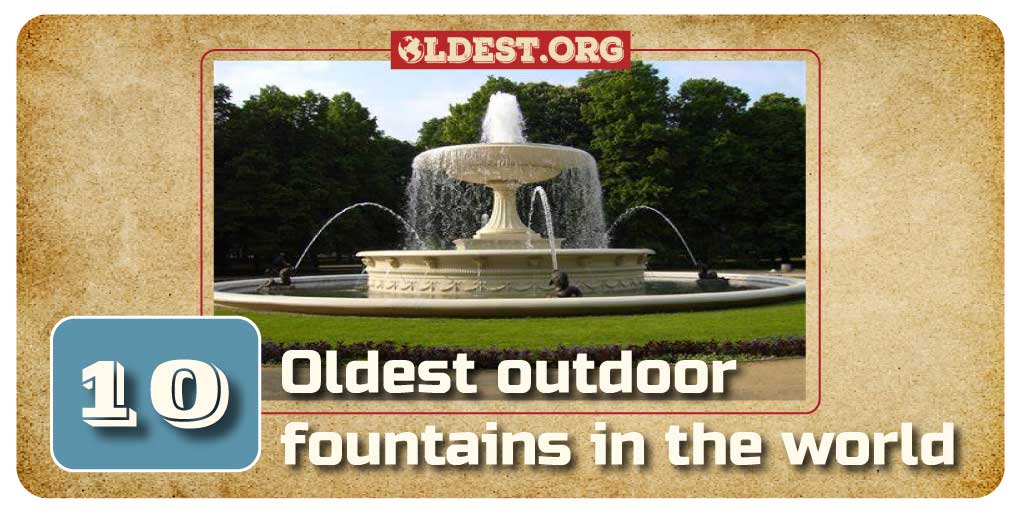Have you ever flipped a coin into a fountain wishing that it’d bring you good luck or love?
Outdoor fountains have been a part of civilization for centuries showcasing the artistic and innovative prowess of ancient cultures. From Rome to the Renaissance era, these remarkable creations have stood the test of time. Get your bags packed to make a wish in these 10 oldest outdoor fountains in the world.
In this article, we will delve into the ten oldest outdoor fountains across the globe, each representing a remarkable journey in water artistry and engineering.
10. The Fountain of Prometheus in the USA
Year Created: 1933
Country of Origin: USA
Fountain Type: Art Deco
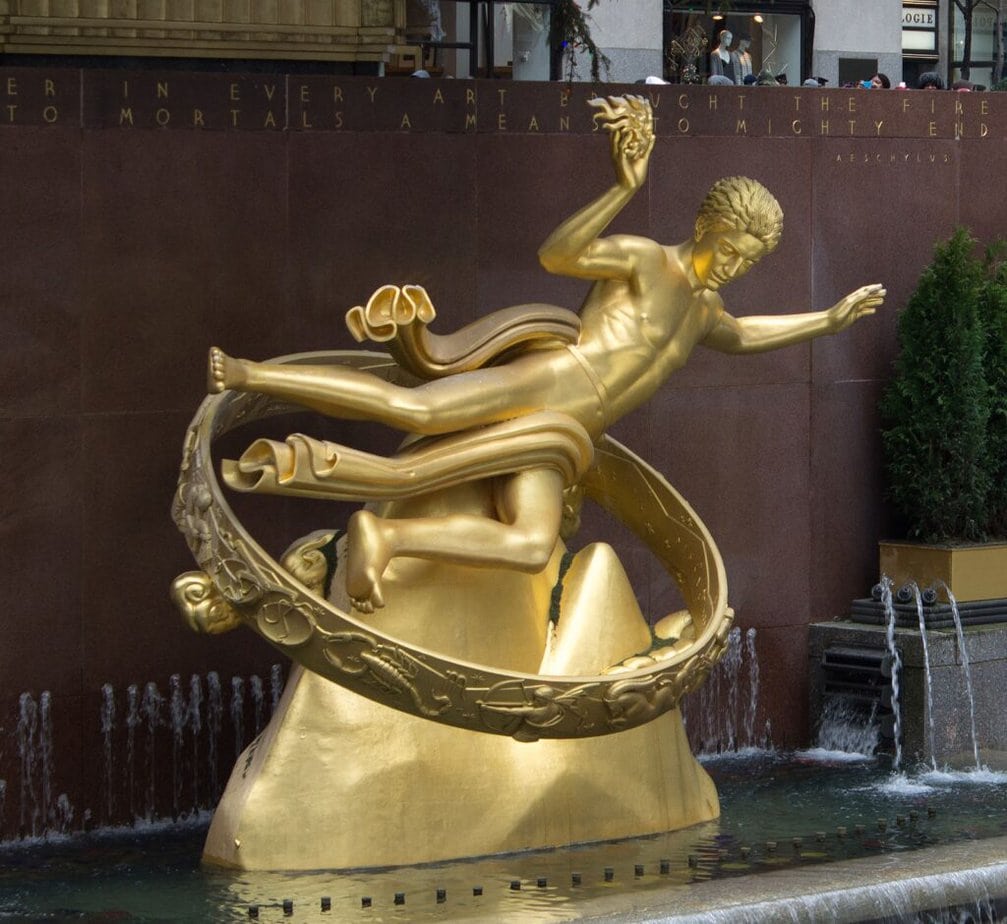
This is a much newer fountain in the oldest list situated in the bustling city of New York. The Fountain of Prometheus was constructed in 1933 at New York Citys Rockefeller Center. It stands as an example of the Art Deco style, designed by Paul Manship.
This fountain pays homage to the Titan Prometheus, who brought fire to humanity. With its fusion of sculptures and water elements, it presents a captivating spectacle.
Did you know?
A unique aspect of the fountain is its ability to shine brightly during the night, just like New york city, thanks to the incorporation of concealed lighting. The strategically placed lights bring the fountain to life after dusk, turning it into a stunning beacon in the heart of the city.
9. The Bethesda Fountain in the USA
Year Created: 1873
Country of Origin: USA
Fountain Type: Neo-Classical
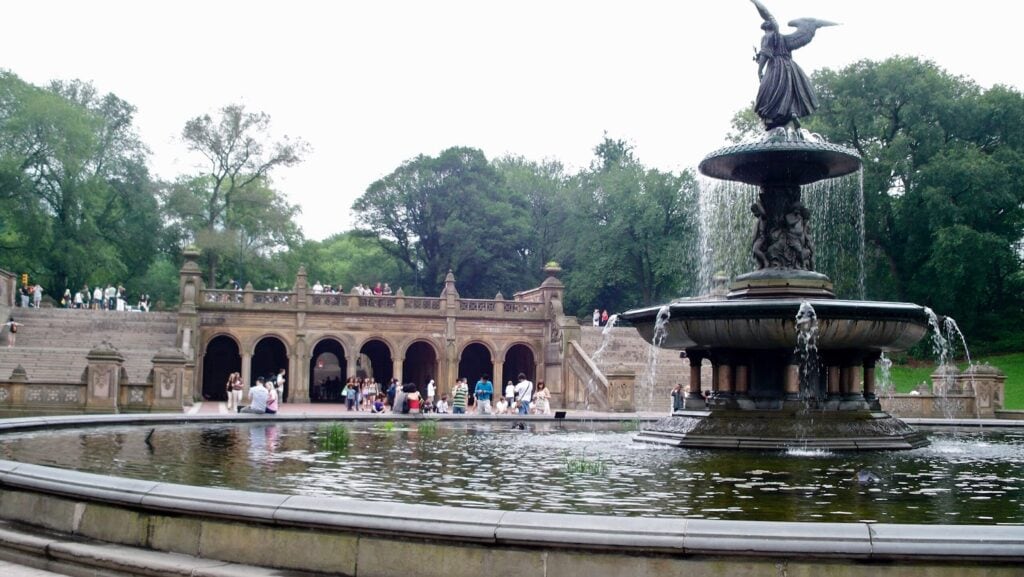
The “big apple” has the most dreamers, I suppose, because of all the fountains they have. Unveiled in 1873, The Bethesda Fountain graces Central Park in New York City. Designed by Emma Stebbins, it symbolizes the healing power of water. Adorning its pinnacle is a statue named Angel of the Waters, embodying purity and life-giving properties. The Bethesda Fountain exemplifies the city’s commitment to art and green spaces.
Did you know?
The centerpiece of the fountain is a striking bronze statue of an angel, representing the biblical figure of the Angel of the Waters. The angel holds a lily in one hand, symbolizing purity, and blesses the water flowing beneath her with the other, signifying healing.
8. The Fontaine du Palmier, in France
Year Created: 1806
Country of Origin: France
Fountain Type: Neoclassical
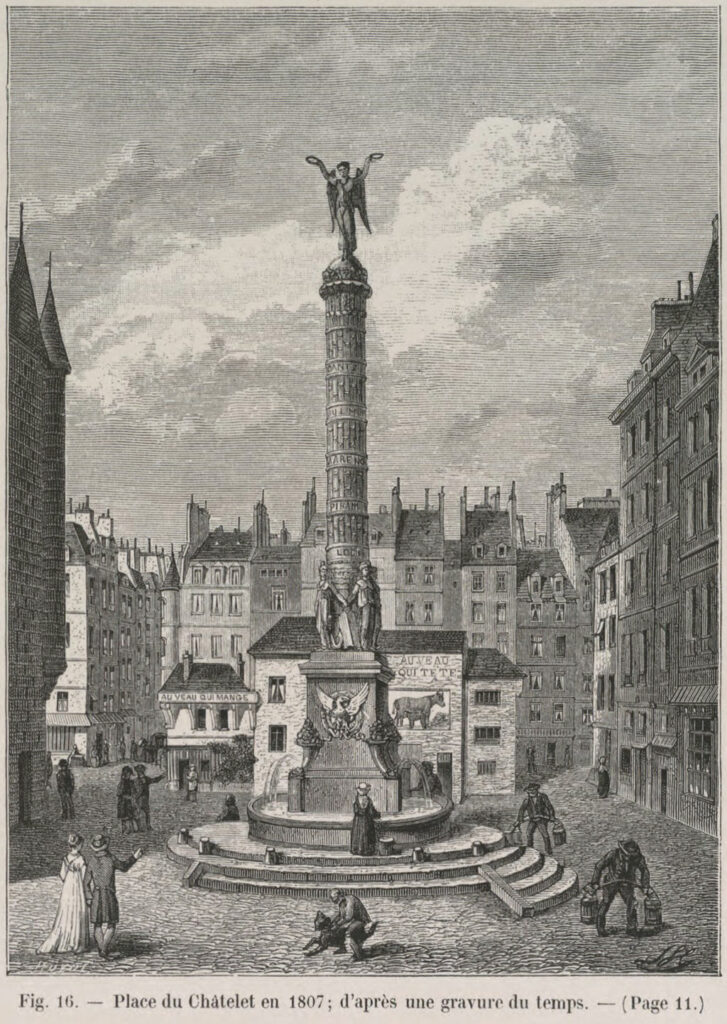
Commissioned by Napoleon Bonaparte in 1806, Paris Fontaine du Palmier is a visitor magnet today. This is a fountain built in the style created to honor the victories of an individual. It can be found in Place du Châtelet.
Features a bronze palm tree, which serves as a symbol of both peace and triumph. The Fontaine du Palmier reflects the magnificence of the Napoleonic era as the growing popularity of ornamental fountains in Paris.
Did you know?
The Fontaine du Palmier stands at an impressive height of approximately 52 feet (16 meters), making it one of the tallest fountains in Paris.
7. The Peterhof Fountains, Russia
Year Created: Early 18th century
Country of Origin: Russia
Fountain Type: Baroque
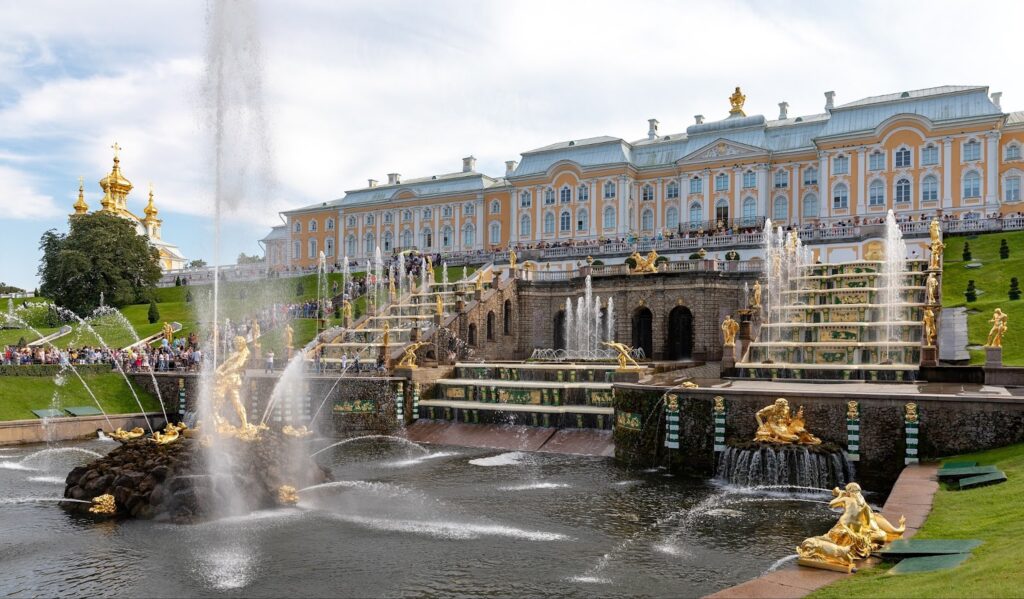
During the century, Peterhof Palace was commissioned by Peter the Great in Russia. It has a Garden à la française adorned with fountains inspired by Versailles. The Grand Cascade is an engineering marvel showcasing cascades, statues gilded in gold and bronze sculptures.
Furthermore, to commemorate Peters’s triumph over Sweden, the Samson and Lion fountain was added between 1800 and 1802.
Did you know?
To supply water to the fountains, a remarkable aqueduct was built, stretching over four kilometers in length. The aqueduct effectively transported water from reservoirs in the upper gardens to the various fountains, enabling the grand display of waterworks throughout the complex.
6. The Triton Fountain, Italy
Year Created: 1642
Country of Origin: Italy
Fountain Type: Baroque
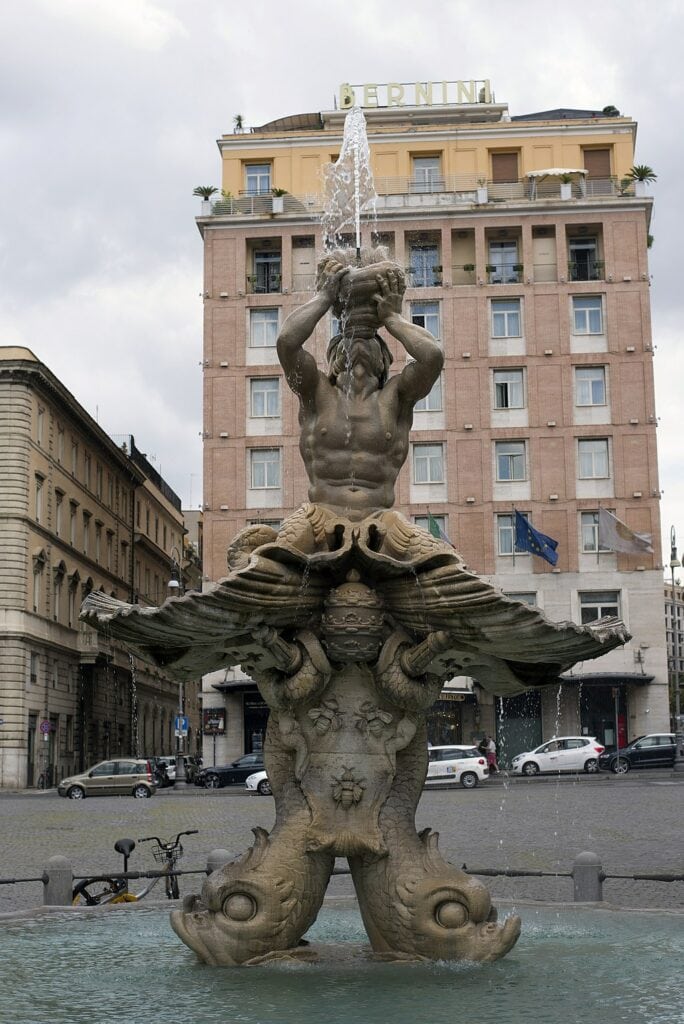
I have seen a pattern of the Mediterranean fountains being a big hit with tourists and historians alike. These sculptures are rooted in mythology. A masterpiece of Baroque sculpture, the Triton Fountain in Rome was designed by Gian Lorenzo Bernini. Completed in 1642.
It depicts Triton—a figure that’s half human and half fish—blowing into a conch shell to symbolize calming waters. This dynamic portrayal of the sea god has become a representation of Bernini’s artistic talent.
Did you know?
The fountain underwent a series of relocations and restorations over the centuries. Initially, it was placed in the Piazza Barberini, then moved to the Piazza dei Crociferi, and finally, in 1870, it found its current location at the Piazza Barberini once again.
5. The Barcaccia Fountain, Italy
Year Created: 1627
Country of Origin: Italy
Fountain Type: Baroque
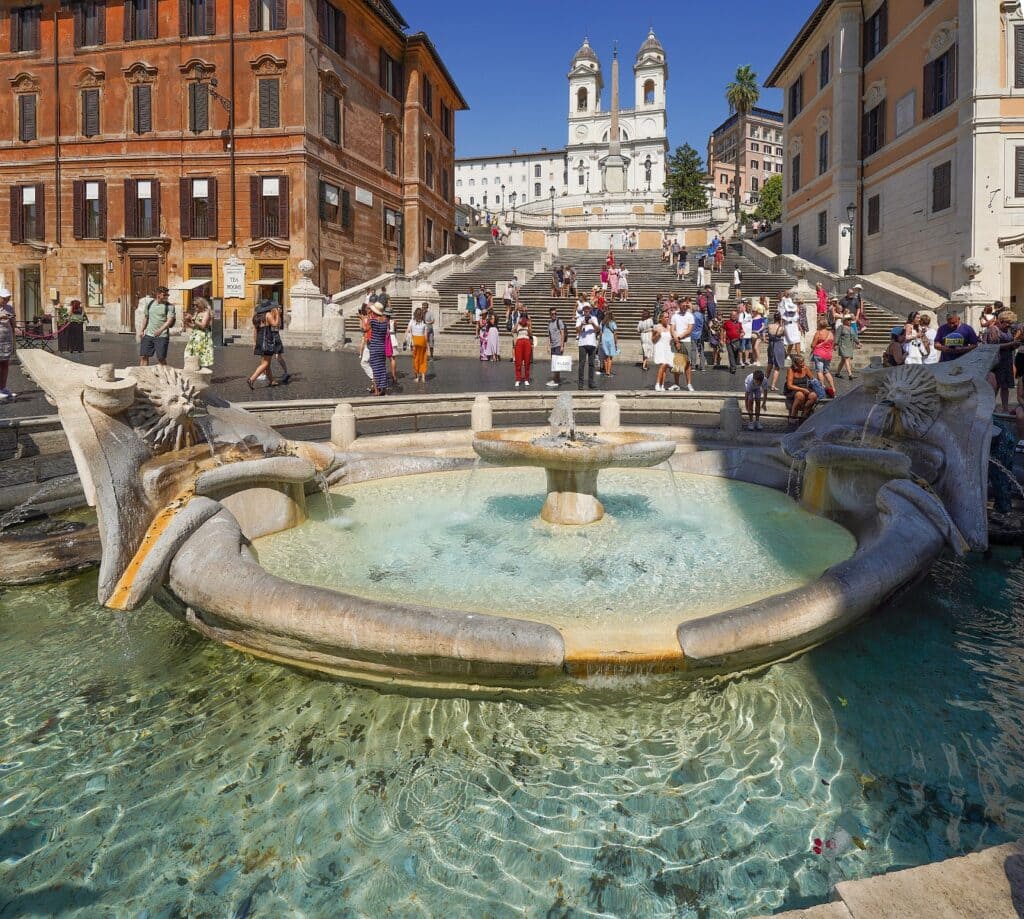
Designed by Pietro Bernini and his son Gian Lorenzo Bernini back in 1627, the Barcaccia Fountain can be found in Rome. The structure resembles a boat partially submerged, paying tribute to a flood of the Tiber River.
This charming and unique fountain is located at the bottom of the Steps. Serves as an early representation of the Baroque style.
Did you know?
The Barcaccia Fountain was one of the first fountains in Rome to use a pressurized water supply system. It relies on the nearby Acqua Vergine aqueduct, which was restored during the construction of the fountain, to provide a constant flow of water.
4. The Roman Fountains, Italy
Year Created: 1612 and 1730
Country of Origin: Italy
Fountain Type: Roman Baroque
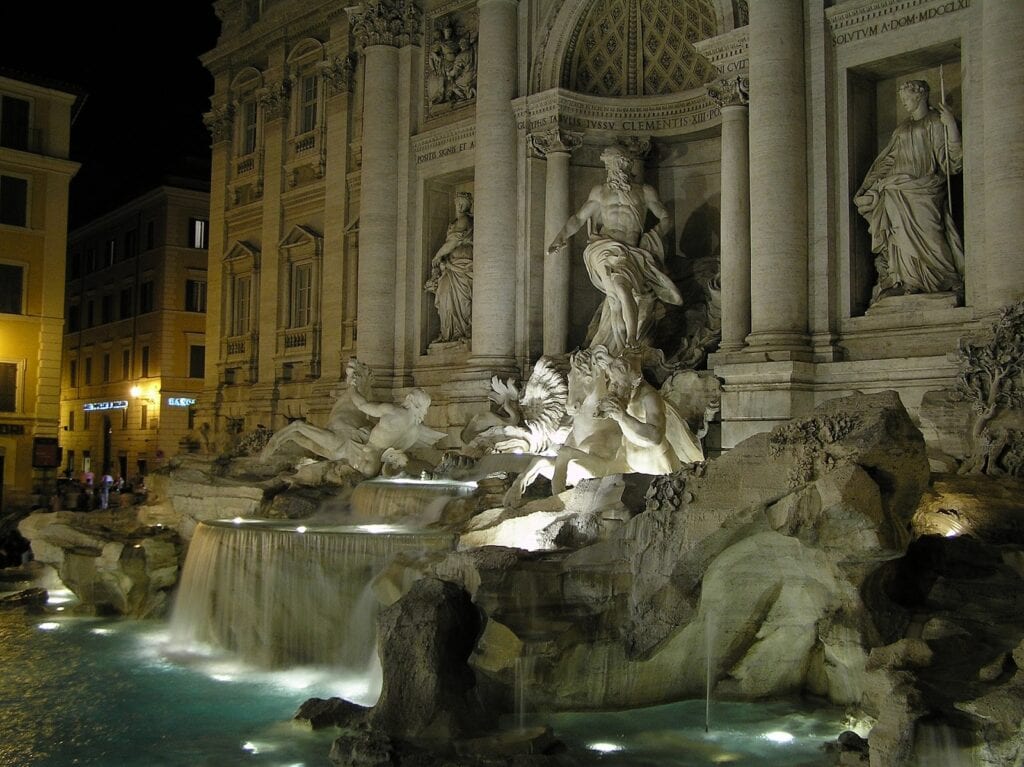
Ancient Rome was renowned for its water infrastructure and exquisite fountains. Noteworthy examples include the Fontana dell’Acqua Paola, constructed in 1612, and the Fontana di Trevi dating back to 1730.
These Roman fountains seamlessly blended artistry with engineering by featuring figures and symbolic elements, creating spectacles. They stood as landmarks that showcased Romes’s water management system.
Did you know?
The Roman Fountains are supplied with water from the Acqua Felice Aqueduct, built during the Renaissance by Pope Sixtus V. The aqueduct ensured a steady water supply to the fountains, enhancing their beauty and functionality.
3. Fountains at Villa d’Este, Italy
Year Created: the 16th century
Country of Origin: Italy
Fountain Type: Renaissance
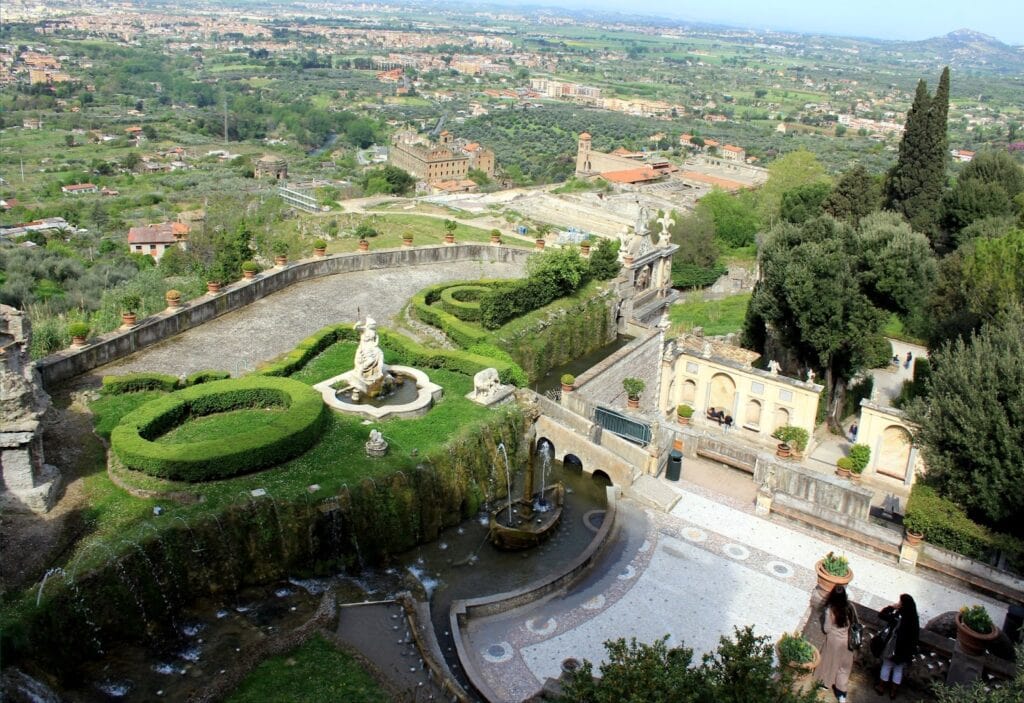
Located in Tivoli, Italy, the fountains at Villa d’Este were built during the century. Serve as an exceptional testament to Renaissance design. Among its highlights is the Hundred Fountains, which showcases an array of water-spouting masks and sculptures.
Designed by architect Pirro Ligorio, this complex of fountains beautifully exhibits both creativity and engineering prowess from the Renaissance era.
Did you know?
The Viale delle Cento Fontane (Hundred Fountains Avenue) is a breathtaking feature of the garden, comprising a long path adorned with numerous small fountains. The water cascades down a series of steps, creating a symphony of trickling sounds and cooling the air during hot summer days.
2. The Medici Fountain, France
Year Created: the 16th century
Country of Origin: France
Fountain Type: Renaissance
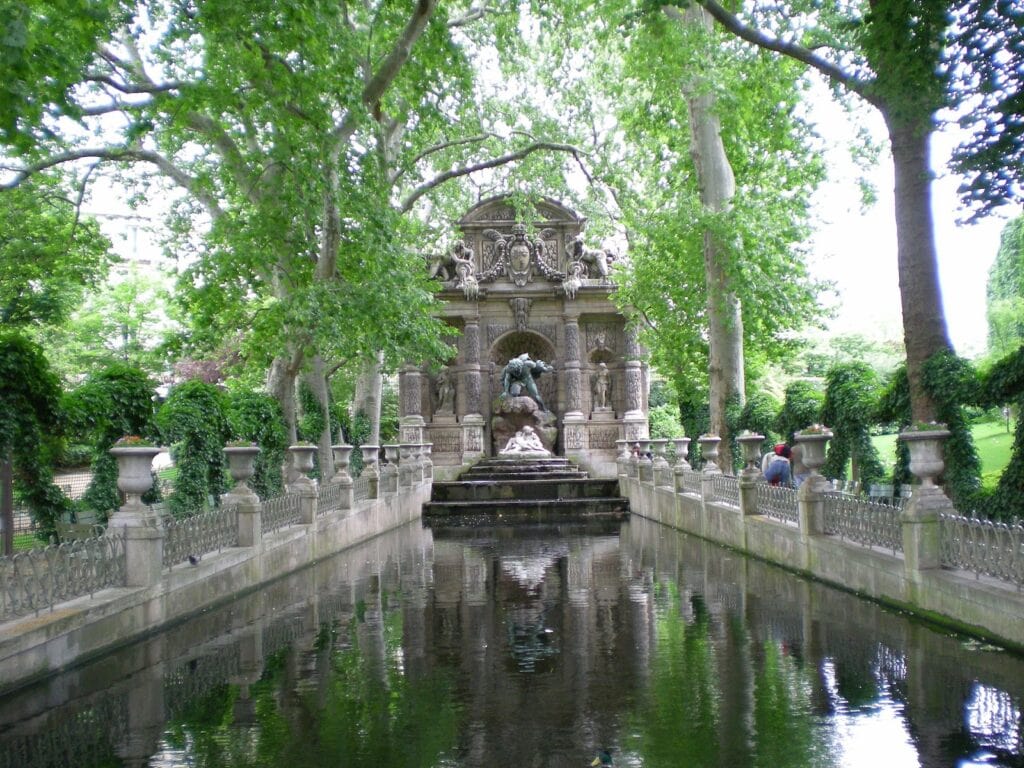
Situated at Luxembourg Palace in Paris, the Medici Fountain was constructed during the 16th century showcasing French Renaissance architecture. The fountain was commissioned by Queen Marie de Medici and features sculptures of nymphs, satyrs, and cupids.
It represents the Medici family’s influence and power during the French Renaissance.
Did you know?
The Medici Fountain was one of the first fountains in Paris to be supplied with water using a steam-powered pump system. This innovation allowed the fountain to function without relying on natural water sources and was an important step in the evolution of urban fountains.
1. Fountain of Qasim Pasha, Palestine
Year Created: 1526
Country of Origin: Ottoman Empire (now located in the Old City of Jerusalem)
Fountain Type: Ablution and drinking fountain (sebil or sabil)
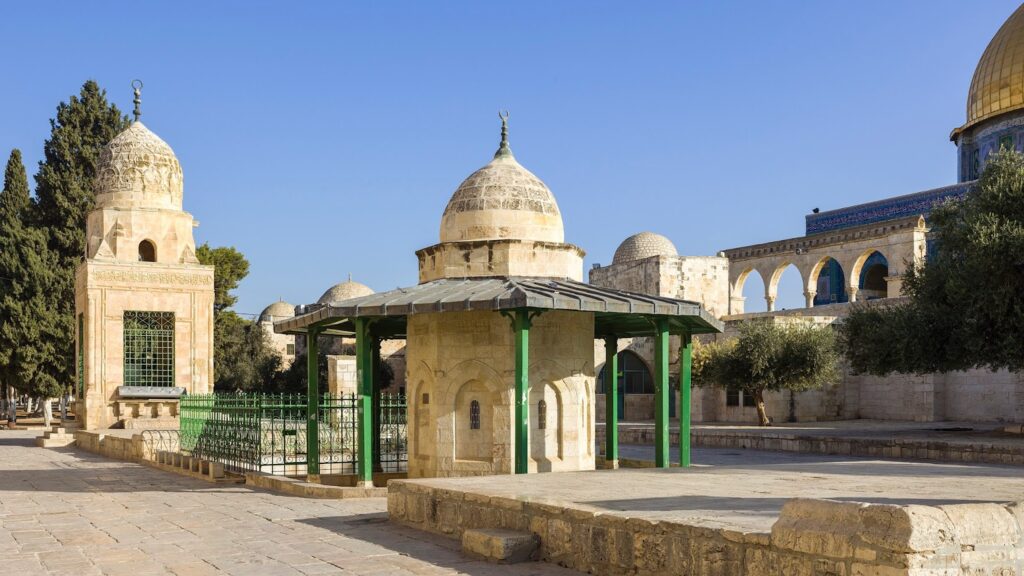
The Fountain of Qasim Pasha, also known as Kasım Paşa Çeşmesi in Turkish, is the known oldest outdoor fountain in the world. It is located in the western esplanade of the al-Aqsa Compound in the Old City of Jerusalem.
Built in 1526 during the reign of Suleiman the Magnificent, it served as an ablution and drinking fountain, providing fresh water to the public. The fountain’s unique octagonal design with an octagonal drum supporting the dome sets it apart from other sabils in the area. The structure underwent restoration in the 1920s and 1998, preserving its historical significance to this day.
Did you know?
The fountain’s inscription refers to Suleiman as “the second Solomon,” highlighting his achievements in relation to Jerusalem.
Conclusion
These ten outdoor fountains are among the oldest showcasing the incredible craftsmanship and artistic brilliance of ancient civilizations. Each fountain has its unique tale, mixing myth and reality and leaving a lasting impact on history.
These fountains continue to bring in people from around the world, reminding us of the marvellous engineering designs of their time.


